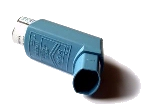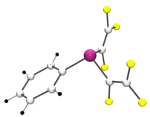Research Facilities
Our research falls under the umbrella description of "Fluorine Chemistry", and we deliberately deal with aspects that straddle the usual inorganic, organometallic and organic boundaries. We investigate new methods of introducing fluorine and fluorinated groups into main-group, organic and transition-metal systems. We are interested in the application of these compounds, for example as unusual solvent systems, in polymeric applications as new reagents and specialist ligands. We investigate structure/property relationships in fluorine-containing species in the solid state and make extensive use of modern spectroscopic techniques such as multinuclear NMR methods and IR & Raman spectroscopy. Below you will find brief details of the facilities we use for our research programmes.
The Group Facilities
Much of the work we carry out is cross-disciplinary and includes aspects of traditional inorganic fluorine chemistry as well as aspects of organofluorine chemistry. The lab is therefore equipped for both types of work. We have a dedicated laboratory, where each PhD and post-doc worker has a separate fumehood with double-manifold nitrogen/vacuum lines. We also have an all-metal pressure/vacuum line for handling aggressive materials, such as fluorine. Handling and storage of air-sensitive materials is achieved using an argon-filled, recirculating dry-box. Low-temperature reactions are controlled by a closed-cycle dip chiller (dial-up temperature RT to -90 C). We have good in-group computing facilities, such as networked PCs for NMR data work-up, central data storage, word processig etc. We also have a dedicated group-owned linux fileserver for data storage, computational modelling and database work.
The School of Chemistry Facilities
The School of Chemistry is very well equipped and includes the following:
- A wide range of multinuclear NMR spectrometers, at 200, 300, 400 MHz & for liquids and solids
- In-house elemental analysis (eg C,H,N, halogens ...)
- Extensive mass spec. facilities (EI, FAB, Electrospray, ToF-Maldi ...)
- Fourier Transform (FTIR) IR and Raman (FTR)
- 3 single crystal Xray machines
- Powder diffractometer, including environmental chamber
- Access to extensive autoclave facilities
- Surface methods such as SEM, TEM, SIMS ...
- Dedicated GC, GC-MS, chiral HPLC lab
- UV, visible & polarimetry ....
A full publication list is available, as is a list of the many students and visitors who have actually generated these interesting and exciting results.





